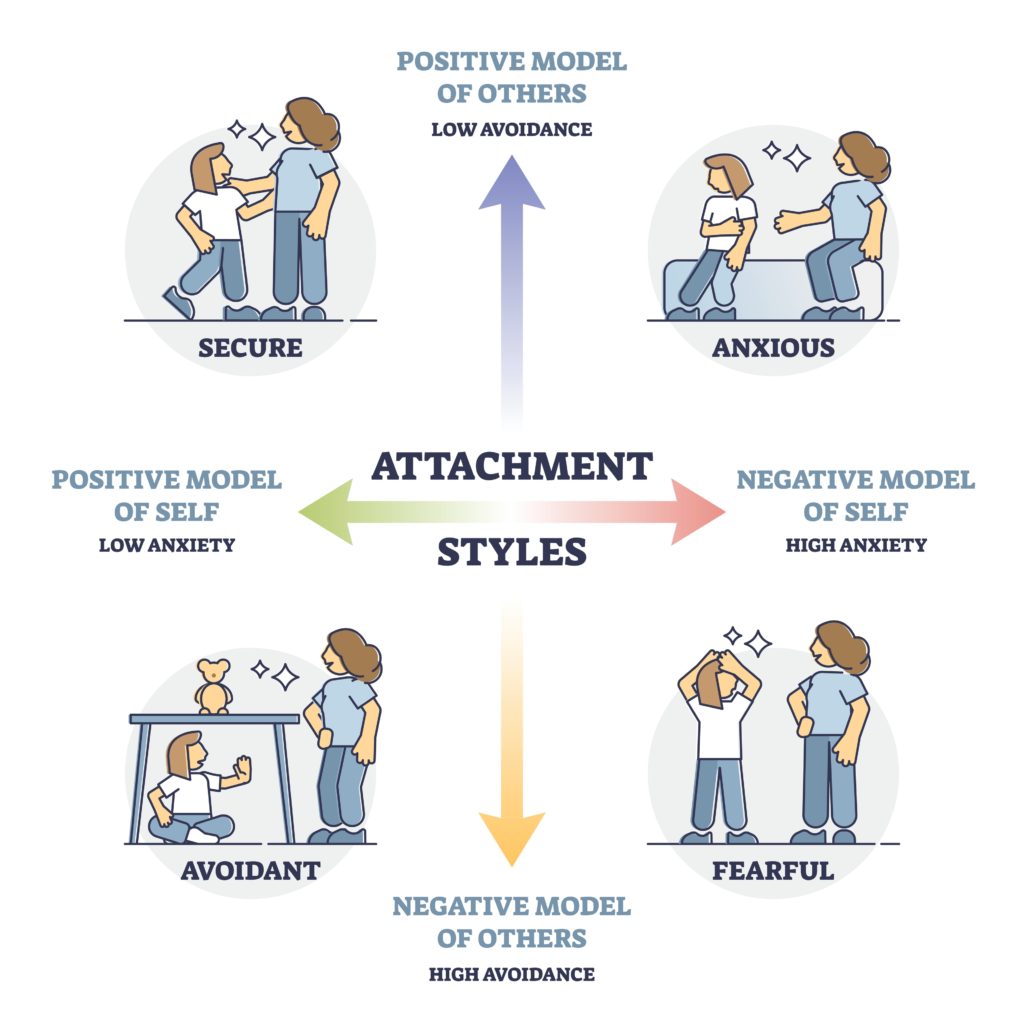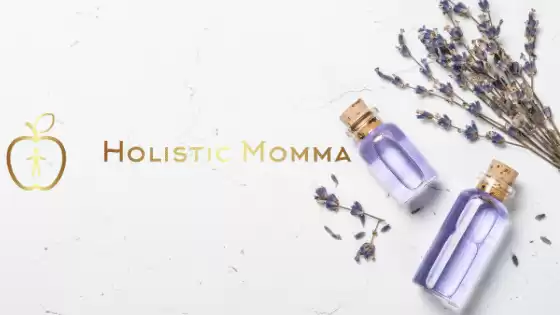How Attachment Styles Help Your Relationship Fail or Succeed
According to attachment theory, how we attach to our primary caregivers as infants and toddlers profoundly impacts our adult relationships.
There are four main attachment styles: secure, anxious-preoccupied, dismissive-avoidant, and fearful-avoidant. Each one has a different effect on how we behave in our romantic relationships.
Some people may be more likely to stay in unhealthy or abusive relationships because they have an insecure attachment style and fear being alone. Others may be so avoidant of intimacy that they push their partners away without realizing it.
Understanding your attachment style and that of your partner can help you make your relationship stronger and healthier. Attachment styles can be helpful to know if you need to self-reflect and figure out how to work on yourself by minimizing your anxiety.
When you are single it is really beneficial to self reflect on your attachment style and learn how to improve it in order to have a healthy level of vulnerability when you are in a relationship.
You can reduce your anxiety around losing someone or related to commitment.
Table of Contents
What Are Attachment Styles?
Attachment styles are how you relate to others in your life, which stem from early experiences with your primary caregiver and how they respond to your needs.
If your caregiver were attuned to you and responsive to your needs, you would develop a secure attachment style. This means you feel confident in yourself and your relationships and can give and receive love without feeling anxious or insecure.
On the other hand, if your caregiver is unavailable or unresponsive to your needs, you may develop an insecure attachment style.
Attachment Theory
Attachment Theory was founded by John Bowlby and was intended to understand a child’s attachment to their mother or caregiver and how it impacted their personality and view on relationships.
Secure attachments in childhood help children develop confidence and impact their potential in life. This is a small part of why you may hear people talk about “going back to childhood” or “childhood trauma.” Although it may have been a long time ago, it still impacts how you view the world, relationships, and expectations.
According to Schaffer and Emerson, attachment theory in childhood includes four stages of attachment development: pre-attachment, attachment in the making, clear-cut attachment, and goal-corrected partnership.
Research shows that responding to a child’s needs promptly and sensitively is a sign of a quality relationship. However, you do condition your children with the way you respond. If you do not like your children to say “mommy mommy mommy” while you are talking to someone, kindly teach them what you would like them to do. Depending on their age, you can use 2-3 word phrases to tell them how to say your name once and wait. This means that you have to respond and not forget about them, which could lessen the reinforcement.
Adult attachment is the tendency to make substantial efforts to seek and maintain closeness and relationships with a few individuals. This is to maintain security, a feeling of safety, and even confidence.
The Types of Attachment Styles

Secure Attachment Style
People with a secure attachment style feel confident and self-assured and can give and receive love without feeling anxious or insecure. They also tend to have healthier relationships, are more likely to communicate openly with their partners, and feel comfortable with intimacy.
People with a secure attachment style can have healthier relationships because they’re not afraid of intimacy. They trust that their partner will be there for them, even when things are tough.
How Can a Secure Attachment Make or Mar Your Relationship?
If you have a secure attachment style, you’re more likely to have a healthy and happy relationship. That’s because you’re not afraid of intimacy and trust that your partner will be there for you, even when things are tough.
However, you’re not immune to relationship problems even if you have a secure attachment style. All couples go through rough patches, and it’s essential to communicate openly with your partner and seek help if you’re struggling.
Anxious-Preoccupied Attachment Style
People with an anxious-preoccupied attachment style tend to be clingy and need constant reassurance from their partners. They may also be quick to anger and become jealous easily.
This attachment style is often the result of having an inconsistently available caregiver. Children who never knew when their caregiver would be there for them learned to be clingy and dependent.
Many individuals have relationships that provoke anxiety and anger in them. They may maintain these relationships due to the security it provides. Causing an individual to become clingy or stay in an abusive relationship due to cognitive distortions and negative self-talk that lead them to think they could not be happy alone.
- -How to Learn relaxation techniques you can do anywhere.
- -Identify anxiety in yourself and others.
- -Learn how to better react to situations and set a firm foundation for dealing with stressful situations.
- Use Natural Supplements, Dietary, and Lifestyle changes to help you feel less anxious sooner.
- I am a Counselor in Training, so I share what I learn through my education and experience and the price will go up shortly--- However! You will get all of the free updates I make to the course at no additional charge to you! As I learn through research, my education, and personal experimentation of new supplement regimens I will share them with you!
How Can an Anxious-Preoccupied Attachment Make or Mar Your Relationship?
If you have an anxious-preoccupied attachment style, you may find it difficult to trust your partner. You may also become clingy and need constant reassurance, which can be exhausting for your partner.
Take a step back and give your partner space when needed. If you’re finding it difficult to manage your anxiety, seek professional help.
Dismissive-Avoidant Attachment Style
People with a dismissive-avoidant attachment style tend to be independent and self-reliant. They’re uncomfortable with intimacy and may have difficulty trusting or being close to others.
This attachment style is often the result of a caregiver who is unresponsive to their needs. As children, they learned that it was best to rely on themselves and not expect too much from others.
How Can a Dismissive-Avoidant Attachment Make or Mar Your Relationship?
If you have a dismissive-avoidant attachment style, you may find it difficult to be intimate with your partner. You may also have difficulty trusting them and will likely keep them at arm’s length, even if you care for them.
Try to be open to intimacy, even if it feels uncomfortable.
Fearful-Avoidant Attachment Style
People with a fearful-avoidant attachment style tend to be both clingy and independent. They want closeness and intimacy but are afraid of being rejected or abandoned. As a result, they may have a hard time bonding with others.
This attachment style often results from having a caregiver either unresponsive or overly responsive to their needs. As children, they found difficulty predicting how others would treat them, so they developed a fear of intimacy.
How Can a Fearful-Avoidant Attachment Make or Mar Your Relationship?
If you have a fearful-avoidant attachment style, you may have difficulty staying in a serious relationship. The reason is that you think others will leave or reject you eventually.
You need to work on your trust issues and become more accepting of people and positive.
What is My Attachment Style?
Discovering and understanding your attachment style is crucial because it can significantly impact your current and future relationships.
If you’re unsure what your attachment style is, there are a few ways to find out. First, you can ask yourself how you tend to act in relationships.
- Do you find it difficult to trust others?
- Are you quick to become angry or jealous?
- Do you feel safe, secure, and happy?
These questions are a good start, but you should consider taking a comprehensive quiz or test to determine your attachment style. Here’s an Attachment Style Test you can take for free online.
How to Change My Attachment Style
Changing your attachment style is possible, but it takes time and effort. If you’re interested in changing your attachment style, talk to a therapist or counselor who can help you work through your issues.
You’ll learn how to develop healthier coping mechanisms and build trust in relationships in therapy. You’ll also learn how to set boundaries and communicate effectively with others. You can change your attachment style and improve your relationships with time and effort.
The goal should be to adopt the secure attachment style. A person with a secure attachment style is comfortable with intimacy and can trust and be close to others. They’re also able to give and receive love and affection. This is the best style that will help your relationship succeed.
Closing Thoughts
Your attachment style plays a significant role in your relationships. If you’re unhappy with how your current relationship is going, take some time to reflect on your attachment style. It may be the key to understanding your relationship struggles—and finding solutions.
Also, consider talking to a therapist who can help you work through your attachment issues. You can change your attachment style and have healthier, happier relationships with time and effort.
Originally posted 2022-08-28 16:12:01.
Megan Santiago
Latest posts by Megan Santiago (see all)
- How to Find a Trauma Therapist in Tampa - September 30, 2024
- Help With Bills – How to Get Financial Assistance - March 10, 2024
- The Best Essential Oils for Adrenal Fatigue - March 10, 2024



